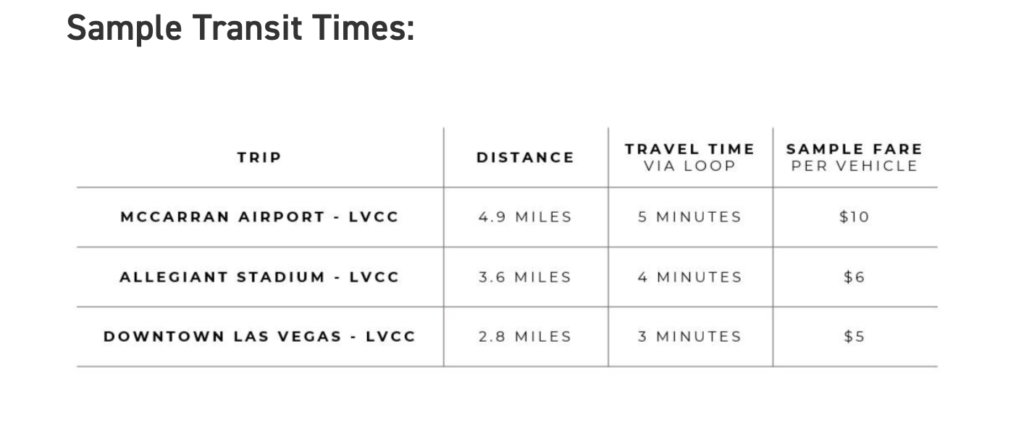Table of Contents
Could Other Transportation Services Get Disrupted?
The Boring Company has released the fare prices for the Vegas Loop, and they are quite reasonable. With enough optimization, it appears that Elon Musk’s tunneling startup may indeed have a shot at disrupting and revolutionizing the public transportation sector. Rideshare Services might be impacted however, efficiency will be the key in getting to a loop and how quickly it can transport other passengers around the strip and to the Convention Center. Will rideshare and taxi services feel the hit of the Vegas Loop when it’s fully up and running in the future of transportation in Las Vegas?

Las Vegas Convention Center District
The recently finished Las Vegas Convention Center Loop is only one part of a more expansive Vegas Loop being planned for Sin City. While the LVCC Loop is only designed to take passengers from one end of the Las Vegas Convention Center to the other, the Vegas Loop is designed to function more like a conventional public transport system, ferrying passengers to multiple destinations around the city. As of now the Convention Center Loop is for Convention guests only and not to the public.


Initial Phase of the Vegas Loop
For now, the Loop system uses Teslas like Model 3s to ferry passengers from one point to another. But in a recent interview with local media, Steve Hill, president and CEO of the Las Vegas Convention and Visitors Authority, hinted that plans are underway to eventually upgrade the LVCC Loop to vehicles capable of transporting 16 passengers at a time. With such vehicles in place, the Vegas Loop would likely be able to accommodate passengers at capacities closer to conventional mass transport solutions.

The Vegas Loop Cost Effective Solutions
The Loop’s potential does not only lie in its fast travel times and reasonable fares. It is also one of the most affordable in the market. During the bidding period for the Convention Center transport project, the LVCC Loop proved the most affordable, requiring only $52.5 million to complete. This made it far cheaper than another shortlisted project, an above-ground transit system from Austria-based Doppelmayr Garaventa Group that was estimated to cost $215 million to complete.